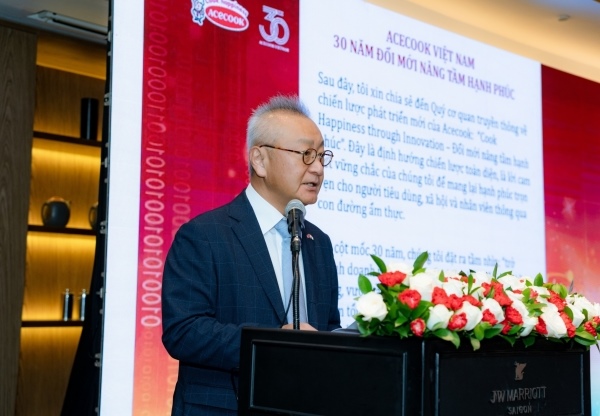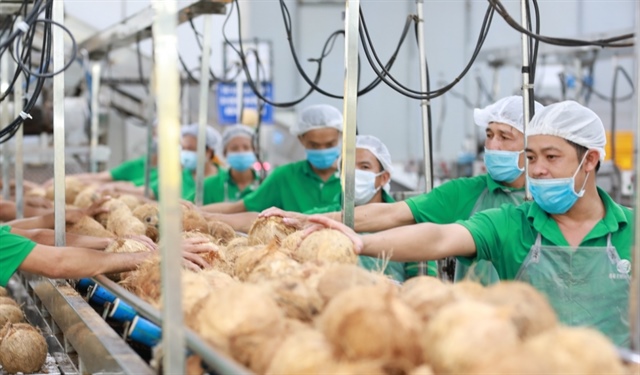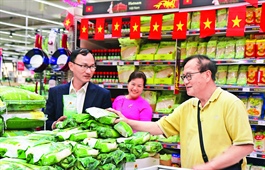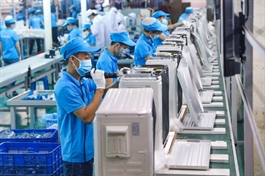Overcoming low export value challenge
Overcoming low export value challenge
Vietnam’s import-export value in the first eight months of 2022 totaled US$499.71 billion. The sum included nearly US$252.6 billion worth of exports and US$247.11 billion worth of imports. Despite a trade surplus of US$5.49 billion, foreign trade activities still encounter certain problems.
Unsustainable export growth
According to Dr. Le Quoc Phuong, former deputy director of the Vietnam Industry and Trade Information Center under the Ministry of Industry and Trade (MoIT), Vietnam’s export growth remains unsustainable, focusing on quantity while the added value of export products is still much lower compared with other ASEAN nations such as Thailand, Singapore and Indonesia. While the manufacturing and processing industries currently account for 86 percent of export value, they mostly provide assembly services outsourced by foreign firms.
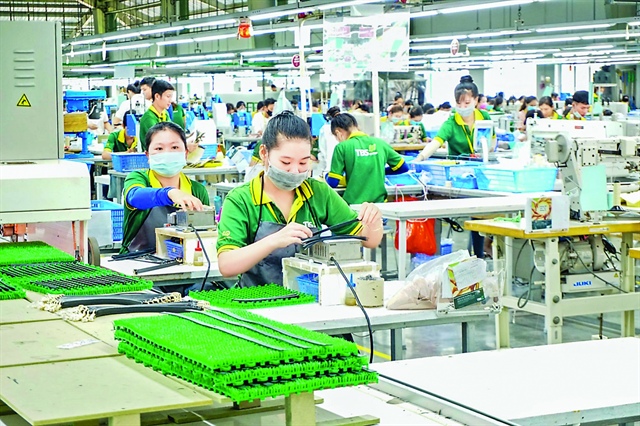
The MoIT will support businesses in seeking alternative material sources |
The agro-forestry-fishery sector exports most products in raw form due to limited deep processing capacity. The unsustainability of exports is also attributed to the heavy dependence on foreign-invested companies. Three-fourths of Vietnam’s export value is derived from companies with foreign direct investment (FDI), and only one fourth from domestic businesses. In the textile, garment, leather and footwear sectors, for example, the FDI sector contributes more than 60 percent to the export value. In the electronics and computer sector, almost 100 percent of the export value comes from the FDI sector.
The FDI sector is also the main contributor to Vietnam’s trade surplus, while domestic companies still import more than they export.
Moreover, the Russia-Ukraine war and China’s zero COVID policy will continue pushing global prices up, especially petroleum and food prices, hiking inflation and affecting exporters. Increased interest rates resulting in higher exchange rate also create difficulties for businesses.
Taking advantage of opportunities
To achieve sustainable export growth, appropriate state policies are needed to increase the local content of made-in-Vietnam products. Support industries should be developed to take advantage of incentives provided by the free trade agreements (FTAs) to which Vietnam is a signatory.

Improving product quality is crucial |
According to Le Hoang Tai, Deputy Director of the MoIT’s Vietnam Trade Promotion Agency, domestic businesses should take the initiative in seeking information about foreign markets and partners. They need to participate in the implementation of trade promotion plans to take advantage of export opportunities, especially to markets with which Vietnam has trade deals.
In addition, businesses should invest in product development, focusing on improving quality to meet strict requirements of importing markets and overcome their non-tariff barriers. They should outline export plans for each product and each market. Greater attention should be paid to domestic material production to improve access to supply chains.
Businesses also need to improve their human resources in terms of foreign language, negotiations and trade promotion skills, as well as knowledge of modern consumption trends to help them promote exports.
The MoIT will continue facilitating administrative procedures related to tax reimbursement, customs clearance for imports and exports, and granting certificates of origin. At the same time, the ministry will support businesses in seeking alternative material supply sources at reasonable costs, as well as in making the best use of FTAs, to accelerate production and export.
| In order to increase export value, businesses should have long-term development strategies, invest in technology to increase the localization rate and improve the quality of human resources. |


